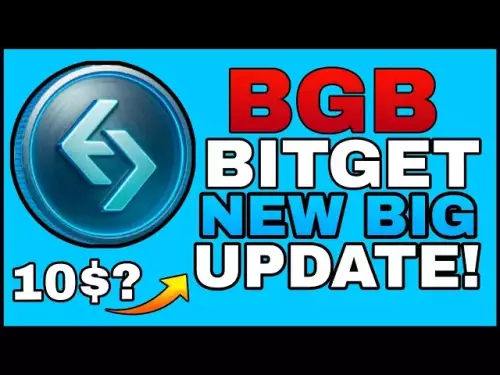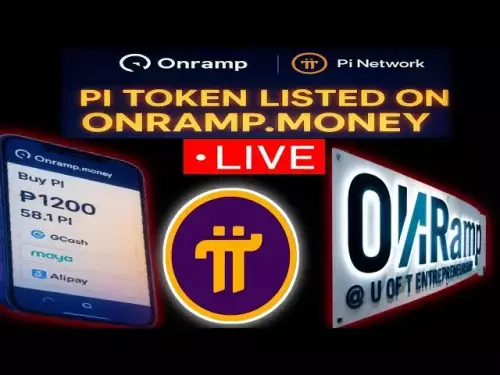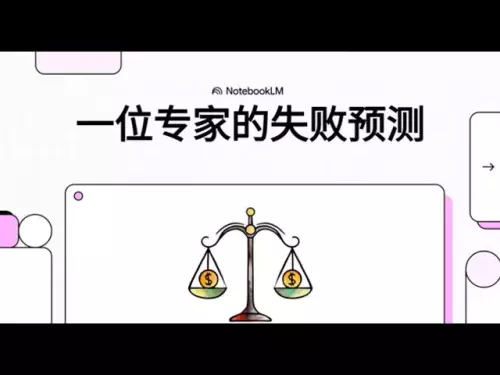-
 Bitcoin
Bitcoin $110300
2.62% -
 Ethereum
Ethereum $4378
-0.34% -
 Tether USDt
Tether USDt $0.9999
-0.01% -
 XRP
XRP $2.797
2.18% -
 BNB
BNB $851.8
-0.22% -
 Solana
Solana $202.3
2.23% -
 USDC
USDC $0.9998
-0.01% -
 Dogecoin
Dogecoin $0.2134
1.75% -
 TRON
TRON $0.3395
0.56% -
 Cardano
Cardano $0.8165
1.39% -
 Chainlink
Chainlink $23.23
1.20% -
 Hyperliquid
Hyperliquid $44.31
0.26% -
 Ethena USDe
Ethena USDe $1.001
0.00% -
 Sui
Sui $3.285
3.78% -
 Stellar
Stellar $0.3611
3.68% -
 Bitcoin Cash
Bitcoin Cash $564.6
5.91% -
 Avalanche
Avalanche $23.78
3.05% -
 Hedera
Hedera $0.2186
1.98% -
 UNUS SED LEO
UNUS SED LEO $9.577
-0.45% -
 Cronos
Cronos $0.2628
-4.43% -
 Litecoin
Litecoin $110.5
2.60% -
 Toncoin
Toncoin $3.141
0.91% -
 Shiba Inu
Shiba Inu $0.00001225
2.12% -
 Polkadot
Polkadot $3.778
2.86% -
 Uniswap
Uniswap $9.555
1.79% -
 World Liberty Financial
World Liberty Financial $0.2341
2.39% -
 Dai
Dai $0.9999
0.01% -
 Bitget Token
Bitget Token $4.695
3.83% -
 Monero
Monero $263.2
-1.55% -
 Aave
Aave $311.1
0.14%
What is DApp?
DApps, decentralized applications built on blockchain, offer censorship resistance and enhanced security compared to traditional apps. However, scalability and user experience remain ongoing challenges.
Mar 07, 2025 at 03:36 am
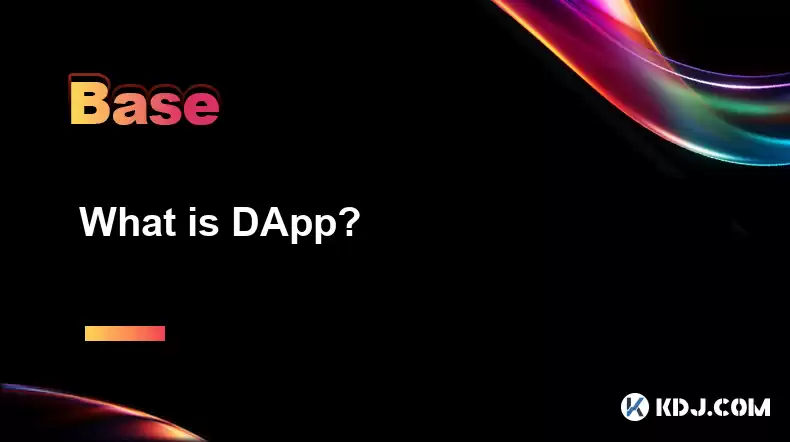
- DApps, or decentralized applications, are applications built on blockchain technology.
- They aim to be censorship-resistant, transparent, and secure.
- Several key differences distinguish DApps from traditional apps.
- Understanding the architecture and functionality of DApps is crucial for navigating the decentralized web.
- Various blockchain platforms support DApp development, each with its own advantages and disadvantages.
- The security and scalability of DApps remain ongoing challenges.
A DApp, or decentralized application, is a software application that runs on a decentralized network, typically a blockchain. Unlike traditional applications that rely on centralized servers, DApps distribute their functionality across multiple nodes, making them resistant to censorship and single points of failure. This decentralization is a core tenet of the DApp philosophy, aiming to empower users and foster trust through transparency.
How does a DApp differ from a traditional app?Several key differences distinguish DApps from their centralized counterparts. Firstly, DApps utilize blockchain technology for data storage and execution, while traditional apps rely on centralized servers owned and controlled by a single entity. Secondly, DApps are often open-source, allowing for community contributions and scrutiny of the codebase, fostering trust and transparency. Traditional apps, in contrast, usually have proprietary code. Finally, DApps typically utilize cryptographic tokens for incentivizing participation and governance, something absent in traditional apps.
What are the core components of a DApp?A functional DApp typically comprises several interconnected components. These include a front-end user interface, which interacts with the user; a smart contract, residing on the blockchain and governing the application's logic; and a decentralized network, providing the infrastructure for the DApp's operation. The interaction between these components is crucial for the DApp's functionality. The front-end is what the user sees and interacts with; the smart contract defines the rules and functionality; and the decentralized network ensures the application's security and availability.
What are some examples of DApps?Numerous DApps exist across various sectors. In the finance sector, decentralized exchanges (DEXs) like Uniswap and SushiSwap allow users to trade cryptocurrencies without intermediaries. In gaming, DApps offer players ownership of in-game assets through NFTs. Decentralized social media platforms aim to give users more control over their data and interactions. Furthermore, decentralized storage solutions like IPFS provide censorship-resistant alternatives to traditional cloud storage. These examples highlight the diverse applications of DApp technology.
How are DApps developed?DApp development requires a deep understanding of blockchain technology and smart contract programming. The process generally involves:
- Choosing a blockchain platform: Ethereum, EOS, and Solana are popular choices, each with its strengths and weaknesses.
- Designing the smart contract: This crucial step defines the application's logic and functionality. Solidity is a commonly used programming language for Ethereum smart contracts.
- Building the front-end: This involves creating the user interface, which allows users to interact with the smart contract. JavaScript frameworks like React and Vue.js are frequently employed.
- Testing and deployment: Rigorous testing is essential to identify and fix bugs before deploying the DApp to the chosen blockchain network.
Despite their potential, DApps face significant challenges. Scalability remains a major hurdle, as many blockchains struggle to handle a large number of transactions. Security is another critical concern, with smart contracts vulnerable to exploits if not carefully designed and audited. User experience is also an ongoing challenge, as interacting with DApps can be more complex than using traditional applications. These challenges require ongoing research and development to overcome.
What are the benefits of using DApps?DApps offer several advantages over traditional applications. Their decentralized nature makes them resistant to censorship and single points of failure. Transparency is enhanced through open-source code and on-chain data. Security is improved through cryptographic techniques. Finally, DApps can empower users by providing greater control over their data and participation in governance.
What blockchain platforms are suitable for DApp development?Several blockchain platforms are popular choices for DApp development. Ethereum, the pioneer of smart contracts, remains a dominant platform. However, other platforms like Solana, EOS, and Polkadot offer improved scalability and performance. The choice of platform often depends on the specific requirements of the DApp, such as transaction speed, cost, and security considerations.
What programming languages are used for DApp development?The choice of programming language depends largely on the selected blockchain platform. Solidity is widely used for Ethereum smart contract development. Other languages include Rust for Solana and C++ for EOS. For the front-end development of DApps, familiar web development languages such as JavaScript, HTML, and CSS are typically used. The front-end is the user interface that interacts with the smart contract on the blockchain.
Common Questions and Answers:Q: Are DApps truly decentralized?A: While aiming for decentralization, many DApps rely on centralized services for aspects like hosting the front-end or providing certain functionalities. True decentralization is a spectrum, and the degree of decentralization varies between different DApps.
Q: Are DApps secure?A: DApp security depends heavily on the quality of the smart contract code and the robustness of the underlying blockchain. Smart contracts are vulnerable to exploits if poorly written or audited, and vulnerabilities in the blockchain itself can impact the security of DApps.
Q: How can I use a DApp?A: Using a DApp typically requires a cryptocurrency wallet compatible with the blockchain the DApp runs on. You may need to interact with the DApp through a web browser or a dedicated application. Specific instructions vary depending on the DApp.
Q: What is the future of DApps?A: The future of DApps is closely tied to the evolution of blockchain technology. Improvements in scalability, security, and user experience will be crucial for wider adoption. The integration of DApps into various aspects of daily life is a potential future development.
Disclaimer:info@kdj.com
The information provided is not trading advice. kdj.com does not assume any responsibility for any investments made based on the information provided in this article. Cryptocurrencies are highly volatile and it is highly recommended that you invest with caution after thorough research!
If you believe that the content used on this website infringes your copyright, please contact us immediately (info@kdj.com) and we will delete it promptly.
- Crypto Markets in September: Futures Outflows and the Buyback Burn
- 2025-09-02 21:05:11
- El Salvador's Bitcoin Historical Conference: Deep Dive
- 2025-09-02 20:45:12
- Meme Coins, Retail Traders, and Smart Investors: A 2025 Crypto Landscape
- 2025-09-02 20:25:13
- Shiba Inu Who? New Meme Coin Wave Rides High
- 2025-09-02 20:25:13
- Gold Futures Soar to All-Time High: A Market Shift in the Making?
- 2025-09-02 20:50:12
- Trump, WLFI Token, and Derivatives Losses: A Wild Ride in Crypto!
- 2025-09-02 19:05:13
Related knowledge

What is a "crypto trading bot" and do they work?
Sep 02,2025 at 04:19pm
Understanding Crypto Trading Bots1. A crypto trading bot is a software application designed to automate the process of buying and selling cryptocurren...

What is a "copy trading" platform?
Sep 02,2025 at 07:00pm
Understanding Copy Trading in the Cryptocurrency Space1. A copy trading platform allows users to automatically replicate the trades of experienced inv...
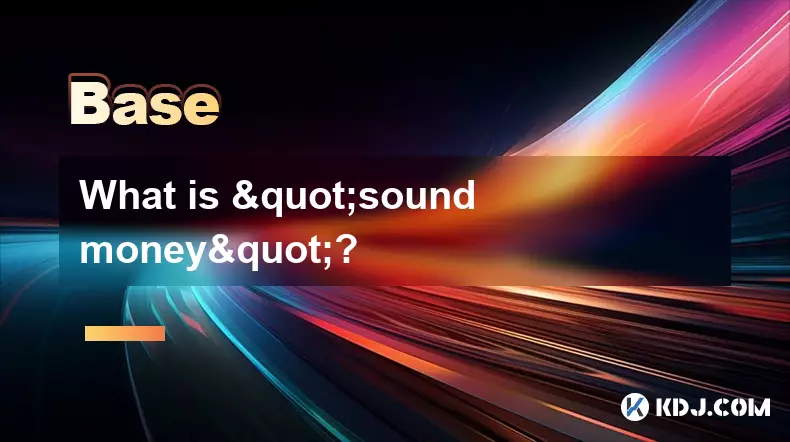
What is "sound money"?
Sep 02,2025 at 09:36pm
Understanding the Concept of Sound Money1. Sound money refers to a currency that maintains its value over time and is resistant to inflation or manipu...
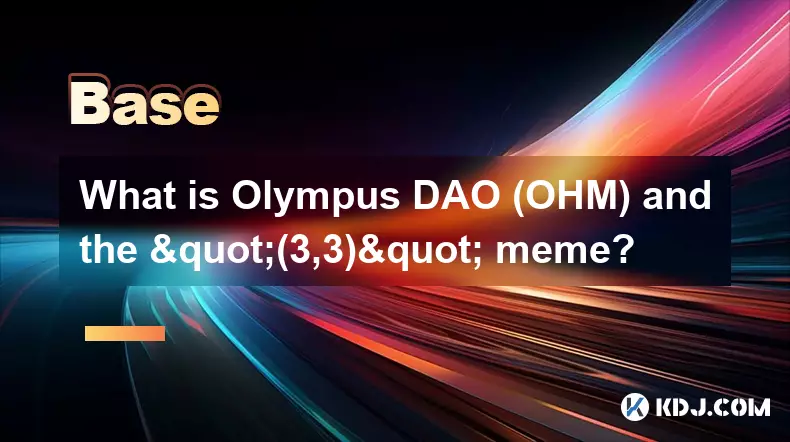
What is Olympus DAO (OHM) and the "(3,3)" meme?
Sep 02,2025 at 06:54pm
Understanding Olympus DAO and Its Core Mechanism1. Olympus DAO operates as a decentralized reserve currency protocol built primarily on the Ethereum b...

What is a "stealth launch" for a crypto project?
Sep 02,2025 at 02:00pm
Understanding the Concept of a Stealth Launch in Cryptocurrency1. A stealth launch refers to the release of a cryptocurrency project without prior ann...
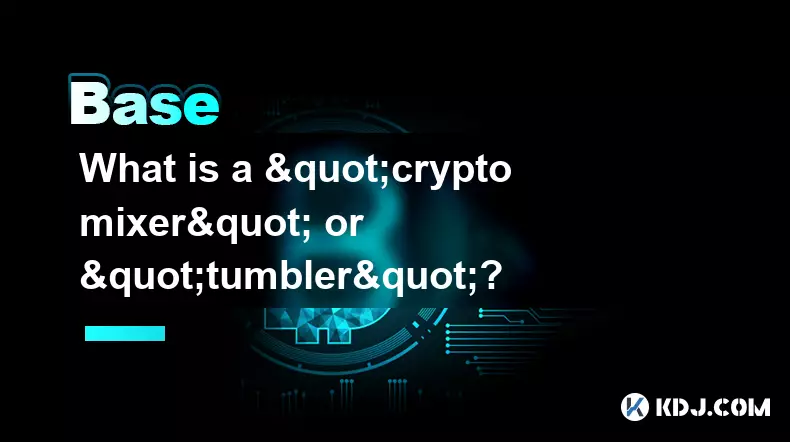
What is a "crypto mixer" or "tumbler"?
Sep 02,2025 at 07:18pm
Decentralized Exchanges Reshape Trading Dynamics1. Decentralized exchanges (DEXs) have surged in popularity due to their non-custodial nature, allowin...

What is a "crypto trading bot" and do they work?
Sep 02,2025 at 04:19pm
Understanding Crypto Trading Bots1. A crypto trading bot is a software application designed to automate the process of buying and selling cryptocurren...

What is a "copy trading" platform?
Sep 02,2025 at 07:00pm
Understanding Copy Trading in the Cryptocurrency Space1. A copy trading platform allows users to automatically replicate the trades of experienced inv...

What is "sound money"?
Sep 02,2025 at 09:36pm
Understanding the Concept of Sound Money1. Sound money refers to a currency that maintains its value over time and is resistant to inflation or manipu...

What is Olympus DAO (OHM) and the "(3,3)" meme?
Sep 02,2025 at 06:54pm
Understanding Olympus DAO and Its Core Mechanism1. Olympus DAO operates as a decentralized reserve currency protocol built primarily on the Ethereum b...

What is a "stealth launch" for a crypto project?
Sep 02,2025 at 02:00pm
Understanding the Concept of a Stealth Launch in Cryptocurrency1. A stealth launch refers to the release of a cryptocurrency project without prior ann...

What is a "crypto mixer" or "tumbler"?
Sep 02,2025 at 07:18pm
Decentralized Exchanges Reshape Trading Dynamics1. Decentralized exchanges (DEXs) have surged in popularity due to their non-custodial nature, allowin...
See all articles





















![[Pycoin] PI Coin -Start introduction of practical use (emergency)?! Now .. 'Here' first you can use it first / How to accelerate mining #paikoin [Pycoin] PI Coin -Start introduction of practical use (emergency)?! Now .. 'Here' first you can use it first / How to accelerate mining #paikoin](/uploads/2025/09/02/cryptocurrencies-news/videos/pycoin-pi-coin-start-introduction-practical-emergency-accelerate-mining-paikoin/68b6ea848f2d1_image_500_375.webp)

